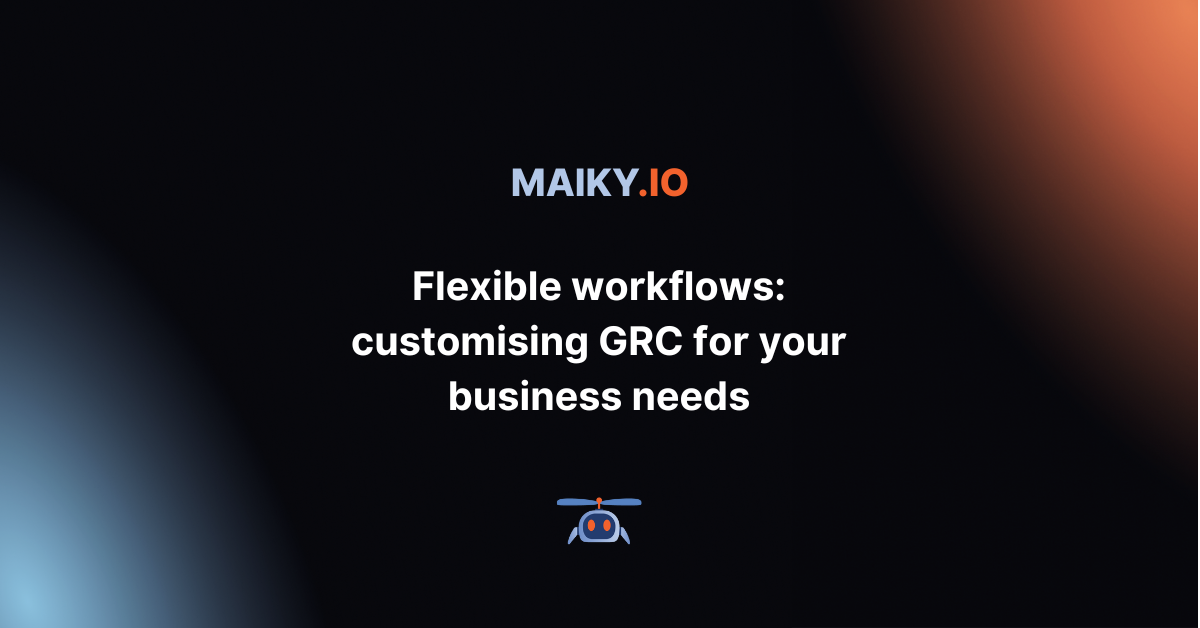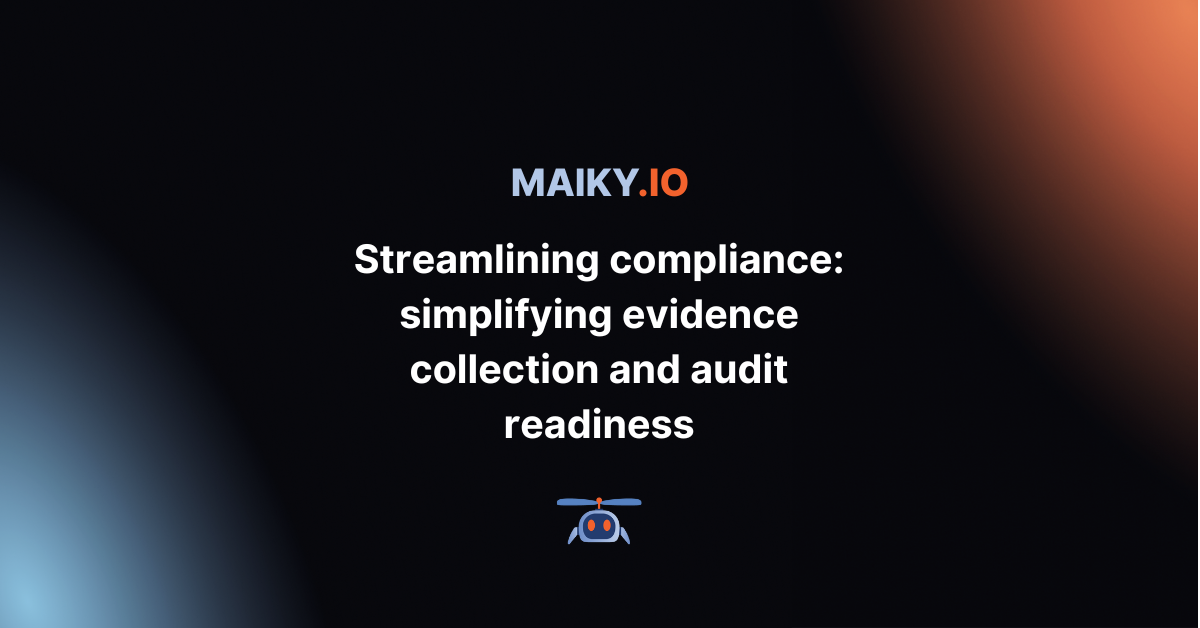Shaping the next generation of security and compliance
Governance, Risk, and Compliance (GRC) has always been about balance. Security leaders must balance protecting the organisation against enabling growth. Compliance managers must balance regulatory obligations with operational efficiency. Risk teams must balance identifying threats with prioritising what matters most.
However, in today’s hyper-connected business environment, this balancing act has become increasingly difficult. Regulations such as NIS2, DORA, SOC 2, and ISO 27001 demand continuous oversight. Attackers are faster and more adaptive than ever before. And boards want real-time assurance that security is resilient, scalable, and aligned with business strategy.
The days of scattered spreadsheets, manual reporting, and siloed solutions are over. The future lies in unified, automated GRC platforms that bring everything together. By integrating risk management, compliance monitoring, and workflow automation into a single system, organisations can build a culture of resilience that scales with growth and adapts to change.
Streamlining Compliance:
Simplifying Evidence Collection And Audit Readiness
Why unified GRC matters for modern organisations
Most companies don’t fail at security because of a lack of effort; they fail because of fragmentation. Different teams use different tools, data sits in silos, and compliance becomes a yearly scramble rather than an ongoing process.This fragmentation creates:
- Blind spots → risk assessments, compliance evidence, and security controls are scattered across spreadsheets, emails, and legacy systems. Leadership never gets the full picture.
- Duplicated work → spots → risk assessments, compliance evidence, and security controls are scattered across spreadsheets, emails, and legacy systems. Leadership never gets the full picture.
- Slow response times → when controls fail or risks spike, it takes too long to coordinate across multiple systems and teams.
A unified GRC program solves these challenges by creating a single source of truth for governance, risk, and compliance. Instead of siloed reporting and manual coordination, every team works within one platform, with shared data, automated workflows, and real-time visibility.
The result is not just efficiency; it’s resilience. Organisations can respond to incidents faster, demonstrate compliance effortlessly, and scale security operations without multiplying overhead.
Automation: reducing manual workload and penalties
Automation is the engine that powers unified GRC. By embedding intelligence and repeatable workflows into daily operations, automation transforms security and compliance from reactive firefighting into proactive resilience.Here is how:
1. Reducing manual tasks:
- Evidence is pulled directly from systems and cloud platforms.
- Risk assessments are updated continuously rather than quarterly.
- Reports for auditors are generated with one click.
With Maiky, customers report up to 75% fewer manual tasks, freeing teams to focus on strategic security initiatives instead of paperwork.
2. Preventing compliance gaps:
-
Automated monitoring ensures controls stay effective.
-
Deviations are flagged immediately, reducing the chance of unnoticed drift.
-
Role-based workflows ensure every control has a clear owner.
This leads to measurable results: organisations using Maiky see up to a 99% reduction in non-compliance penalties because issues are caught before they escalate.
3. Scaling without adding headcount:
-
As compliance frameworks multiply, automation prevents complexity from overwhelming small teams.
-
Security programs scale with growth, without the need to hire large compliance departments.
Automation doesn’t replace expertise; it empowers it. Human judgment remains central to governance, but automation ensures that the day-to-day execution is reliable, consistent, and efficient.
Automating Risk Management:
From Spreadsheets To Real-Time Oversight
Real-world GRC transformation examples
Let’s look at how unified, automated GRC changes outcomes in practice.Case study 1: A SaaS startup scaling to enterprise clients
A 50-person SaaS provider wanted to land its first enterprise customer. The challenge? The enterprise required proof of SOC 2 and ISO 27001 compliance. Using spreadsheets and ad-hoc processes, the startup’s security team faced six months of manual work.
By implementing Maiky’s unified GRC platform:
-
Evidence collection was automated across cloud services.
-
Workflows were mapped to SOC 2 and ISO 27001 simultaneously, avoiding duplication.
-
The audit package was generated in days instead of months.
The result: the company achieved certification faster and closed its enterprise deal on schedule.
Case study 2: A financial services firm adapting to DORA
A mid-sized financial services firm operating in the EU needed to prepare for DORA (Digital Operational Resilience Act) requirements. Instead of building a separate compliance program, they unified their existing ISO 27001 and NIS2 workflows into Maiky.
Automation allowed them to:
-
Continuously test incident response controls.
-
Map overlapping requirements between frameworks.
-
Provide real-time dashboards to regulators and leadership.
The firm avoided costly penalties and demonstrated resilience to both customers and regulators.
Case study 3: A healthcare provider under audit pressure
A healthcare provider managing compliance with HIPAA, ISO 27001, and local data protection laws. Without automation, annual audits consume months of staff time and often result in findings.
With a unified platform:
-
Evidence is collected daily.
-
Policies are automatically reviewed against standards.
-
Audit reports are available on demand.
-
Instead of fearing the audit cycle, the organisation treats compliance as an always-on capability.
Transitioning from legacy tools to Maiky
Migrating from legacy GRC tools to a platform like Maiky does not have to be disruptive. Here are practical steps that organisations follow for a smooth transition:1. Assess your current state
-
Identify where risk, compliance, and workflow data currently live.
-
Map out duplicated effort and manual bottlenecks.
2. Start with one framework
-
Choose a priority framework (e.g., ISO 27001 or SOC 2) as your initial target.
-
Align existing controls and evidence collections to the relevant frameworks.
-
Use pre-built templates in Maiky to onboard quickly.
3. Automate evidence collection
-
Connect your systems (cloud platforms, HR tools, ticketing systems) to Maiky.
-
Enable continuous evidence gathering to replace manual screenshots and exports.
4. Unify workflows across teams
-
Shift risk assessments, policy reviews, and compliance tasks into a single platform.
-
Ensure role-based ownership is clear and visible.
-
Workflow branching ensures each team adapts GRC to fit its operational needs while feeding into a single dashboard.
5. Scale gradually
-
Expand to additional relevant frameworks like NIS2, DORA, or HIPAA by reusing existing evidence and workflows.
-
Eliminate duplication by leveraging cross-mapped controls.
6. Measure and optimise
-
Track key metrics: reduction in manual workload, faster audit preparation, fewer compliance findings.
-
Use dashboards to report measurable business impact to leadership.
With this approach, organisations can move from fragmented, reactive compliance to a unified, automated program in weeks, not years.
How Maiky supports frameworks like ISO 27001, SOC 2, NIS2, DORA, and more
Maiky’s design philosophy is simple: no two organisations are alike. Whether a startup, growing SME, or global enterprise, Maiky seamlessly supports a broad range of standards and regulatory frameworks.-
ISO 27001 → Automates control monitoring, evidence collection, and audit reporting for certification.
-
SOC 2 → Aligns trust service criteria with existing controls, avoiding duplication of effort.
-
NIS 2 → Provides continuous monitoring and reporting to meet EU cybersecurity directives.
-
DORA → Enables financial institutions to demonstrate operational resilience through automated incident and risk workflows.
By mapping controls across frameworks, Maiky reduces duplication and ensures organisations can demonstrate compliance across multiple standards at once. This is especially valuable for growing businesses that want to expand into new markets or industries without rebuilding compliance programs from scratch.
The challenges of implementing NIS 2 for SMEs
All SMEs need to know about the new requirements and how to stay compliant without the stress.
Building a resilient, scalable security culture
The real promise of a unified, automated GRC program is cultural: transforming security and compliance from a reactive cost centre into a strategic enabler of business value and trust.Key cultural shifts enabled by integrated automation:
-
Proactive resilience → Continuous monitoring and automated insights enable teams to stay ahead of threats and regulatory changes, rather than scrambling reactively.
-
Scalability → As organisations grow, GRC workflows expand to fit new business units, regulations, and geographies without rebuilding processes from scratch.
-
Empowered teams → Automation frees security and compliance staff from low-value admin, allowing focus on governance, strategy, and innovation.
-
Trust and confidence → Leadership gains real-time visibility into risk and compliance health, auditors trust traceable, validated evidence, and customers see operational security as a competitive advantage.
Maiky feature highlight: all-in-one GRC platform with measurable impact
At Maiky, we designed our platform around one goal: making security and compliance both scalable and sustainable.With Maiky, organisations gain:
-
All-in-one GRC → Governance, risk, compliance, and workflows unified in a single platform.
-
Framework integration → Pre-mapped controls for ISO 27001, SOC 2, NIS2, DORA, HIPAA, GDPR, and more.
-
Automation at scale → Evidence collection, risk validation, and workflow execution with minimal manual effort.
-
Measurable results →
-
Up to 75% fewer manual tasks....
-
Up to 99% reduction in non-compliance penalties.
-
Faster certification timelines and stronger audit confidence
-
The future of GRC is not about ticking boxes; it’s about cultivating a resilient and scalable security culture. With unified automation, organisations gain the confidence to grow, innovate, and face regulatory scrutiny without fear.
Key Takeaways
-
Fragmented, manual approaches to GRC create blind spots, duplicated effort, and compliance risk.
-
Unified GRC platforms provide a single source of truth for governance, risk, and compliance.
-
Automation reduces manual workload, prevents penalties, and enables scalability.
-
Real-world examples show how companies—from startups to enterprises—achieve resilience and efficiency with unified GRC.
-
Transitioning from legacy tools is achievable with a phased approach, starting with one framework and scaling.
-
Maiky supports major frameworks (ISO 27001, SOC 2, NIS2, DORA, HIPAA, GDPR) and delivers measurable results.
The bottom line: The future of GRC is unified and automated. With platforms like Maiky, organisations can turn compliance from a burden into a business enabler, building a resilient security culture that grows alongside the business.



